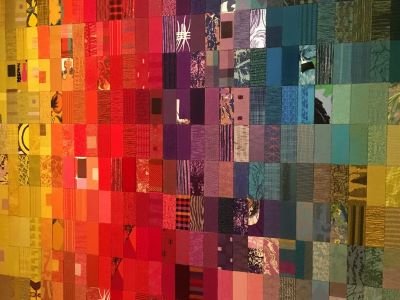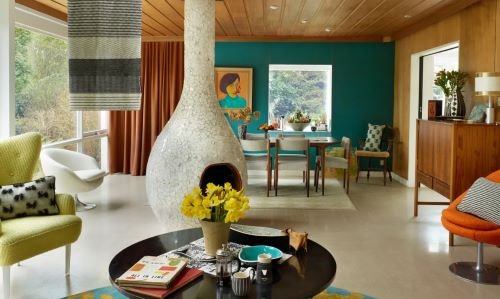The Man Who Changed the World
Born This Day Series, Social Media Content
Born this day in 1916, the ‘scientist of design’ , the man who changed the world.
For many Britons, the ‘50s were worse than the ‘40s. Everybody was broke and living on rations. There were war tribunals and daily revelations about heinous war crimes. People were trying to recover, and/or nursing others back to health. Life was joyless; everything was brown. Brown, beige and grey.
Enter Tibor Reich, a Hungarian refugee who’d landed at the University of Leeds in 1937. He came from a family of weavers and his skills were well-honed; as soon as he was able, he set up shop in Stratford-Upon-Avon. His impact was immediate. He showed people that colour could introduce joy to their homes, and add the energy needed to fight the depression of austerity.
It seems odd now, but he was the first designer to give us combinations that we now think of as normal: pink and green, orange and yellow, scarlet and aqua, chocolate and baby blue. In the ‘50s, that was revolutionary. Some people were aghast; most were thrilled.
Commissions flooded in. His textiles started appearing at Windsor Castle, No 10, Clarence House, the QE2. Clients included Molyneux, Hambro, BOAC, Cunard and Coventry Cathedral. He designed for Liberty, Denby, Wilton. He did the interiors of the Concorde, the seats for Vauxhall. It was not long before he owned eight mills and was the largest fabric manufacturer in the UK (although, as a refugee, he was initially not allowed to be president of his own company, something which spurred him to employ as many immigrants as he could).
Reich developed Deep Textures, a method of weaving that added a third dimension to surface patterns. In 1953, he trademarked a pre-Pantone idea of systematic colour charting called Collingo, which introduced multi-tonal colourways. He invented the felt-tip pen, and gave us Fotextur, a process of manipulating photos into multi-purpose designs—the precursor to Photoshop. His colours inspired a revolution in fashion design; the design of his own house forever changed architecture and interior design.
So the next time you buy a gallon of dove grey paint, you can think of the man who looked at gunmetal grey and thought “Why not add white to that?”

